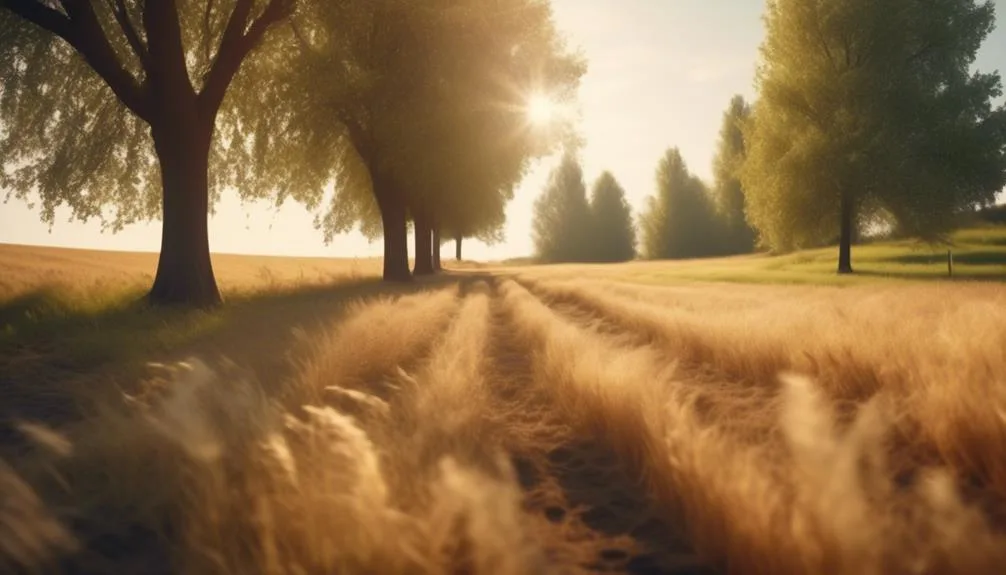Choosing the right spot for sycamore trees is crucial for their growth. To ensure they thrive, consider factors like sunlight, soil, climate, and space. Finding the ideal location is like picking the perfect spot for a sunbather – they need sunshine, good soil, and the right amount of water.
The environment plays a significant role in their long-term health and growth. So, where to plant sycamore trees? Let's explore the key factors to consider.
Sunlight Requirements
To ensure optimal growth, sycamore trees require abundant sunlight, preferably receiving direct sunlight for at least six hours a day. Adequate sunlight is crucial for the healthy development of sycamore trees. When planted in an area with insufficient sunlight, sycamores may become tall and spindly as they stretch toward the light, resulting in weak, unstable trunks. Insufficient sunlight can also lead to reduced foliage, affecting the tree's ability to conduct photosynthesis and produce energy.
Additionally, limited sunlight can hinder the tree's overall growth, resulting in stunted tree height. Proper pruning techniques can help manage the growth of sycamore trees, ensuring they grow strong and healthy. Regular pruning can help maintain an ideal tree height and structure, promoting better sunlight exposure and overall vitality.
Soil Conditions
If your sycamore trees have been struggling due to inadequate sunlight, it's crucial to now focus on the soil conditions to ensure their optimal growth and health.
Nutrient levels play a vital role in the development of sycamore trees. Ensure that the soil is rich in essential nutrients like nitrogen, potassium, and phosphorus. You can achieve this by using a balanced fertilizer specifically formulated for deciduous trees.
Additionally, consider the pH balance of the soil. Sycamore trees thrive in slightly acidic to neutral soil with a pH range of 6.0 to 7.0. If your soil is too acidic or alkaline, amendments such as lime or sulfur can be used to adjust the pH level accordingly.
Watering Needs
Ensuring consistent and adequate moisture is essential for the healthy growth of sycamore trees throughout their lifecycle. Sycamore trees have deep root systems, with roots extending 24 to 36 inches in the soil. This deep root depth allows them to access water from deeper levels, making them moderately drought tolerant once established. However, young trees require regular watering, especially during dry spells, to help them develop deep, extensive root systems. It's crucial to water newly planted sycamore trees deeply, allowing the water to penetrate the soil and reach the roots. Here's a table to illustrate the watering needs of sycamore trees:
| Age of Tree | Watering Frequency |
|---|---|
| 0-1 year | 2-3 times per week |
| 1-3 years | Once per week |
| 3+ years | During dry spells, as needed |
Space and Location
Selecting the right space and location for planting your sycamore tree is crucial for its optimal growth and health. When considering tree spacing, it's important to plant sycamore trees at least 60 feet apart to allow for their expansive root systems and to prevent overcrowding as they mature.
Sycamores thrive in locations with well-draining, fertile soil and full sunlight, although they can tolerate some shade. Their growth patterns are characterized by their ability to adapt to various soil types, making them suitable for a wide range of locations.
Additionally, sycamore trees are known for their fast growth, so be mindful of planting them in areas where they've ample space to reach their full potential without interference from surrounding structures or other trees.
Climate Considerations
Considering the impact of climate on your sycamore tree's growth, it's essential to understand how different environmental factors can influence its development and overall health.
Sycamore trees thrive in temperate climates with a wide temperature range, ideally between 60°F to 100°F (15°C to 38°C). They can withstand occasional frost but may struggle in consistently extreme cold or heat.
Additionally, sycamores require a moderate to high level of rainfall, typically between 30 to 60 inches annually. Adequate water availability is crucial for their growth, especially during the initial stages. However, they're adaptable and can survive short periods of drought once established.
When selecting a location for planting sycamore trees, it's important to consider these temperature and rainfall patterns to ensure optimal growth and health.
Conclusion
In cultivating sycamore trees, choosing a sunny, well-draining spot is pivotal for their thriving growth. Providing ample space is also important to ensure that the trees have enough room to spread their branches and grow to their full potential. Additionally, considering the local climate is crucial as sycamore trees prefer temperate conditions and may struggle in extreme heat or cold. By tending to these needs and providing the right conditions, you set the stage for the sycamore trees' robust and healthy development.
Happy planting!

My interest in trees started when I first saw the giant sequoias in Yosemite.
I was a teenager then, and I remember thinking, “I need to learn more about this.”
That moment stuck with me.
A few years later, I went on to study forestry at Michigan Tech.
Since graduating, I’ve worked in a mix of hands-on tree care and community education.
I’ve spent over ten years helping people understand how to plant, maintain, and protect the trees in their neighborhoods.
I don’t see trees as just part of the landscape.
They are living things that make a real difference in our daily lives.
